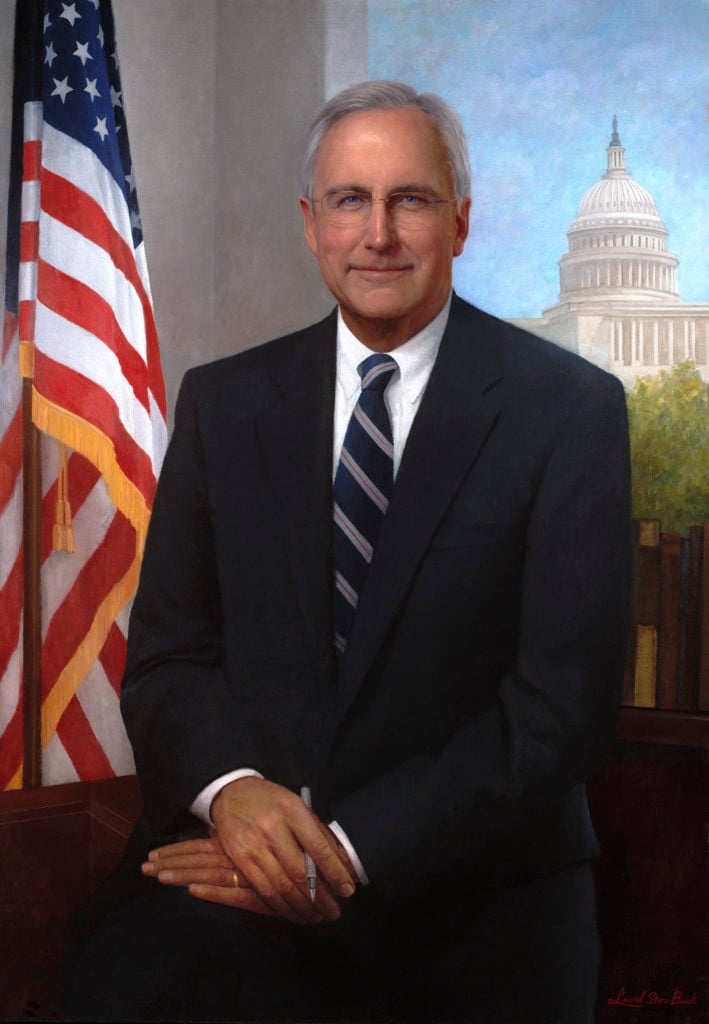Analysis
Politicians Banned From Funding Their Official Portraits With Tax Dollars
It will save the federal government $500,000 a year.

It will save the federal government $500,000 a year.

Sarah Cascone

There’s a time-honored tradition of members of Congress and the executive branch sitting for portraits to hang on the walls of the United States Capitol. Thanks to an amendment to the federal budget, however, future politicians will be forced to pay for such artworks from their own pockets, rather than with taxpayer dollars, reports the New York Times.
The Eliminating Government-funded Oil-painting Act, or “Ego” Act, is the brainchild of Republican senator Bill Cassidy of Louisiana, who took umbrage with the practice despite the negligible cost—roughly $25,000 each, according to a report from the Homeland Security and Governmental Affairs Committee. Altogether, the ban saves the federal government under $500,000 a year.

Kadir Nelson, (2009), of the first African-American woman to serve in Congress.
Photo: Collection of the US House of Representatives.
“The expensive, antiquated notion that all of these officials should get portraits is nonsense,” Taxpayers for Common Sense spokesperson Steve Ellis told the Times. “A simple photograph would do. This is more about stroking egos than preserving history.”
Indeed, Cassidy noted that some the American people had paid for portraits of some politicians who were only in office for a short time, such as former Department of Commerce secretary John Bryson. He served for only eight months, but left tax payers with a $22,400 bill for his official portrait.

Henry F. Darby, Henry Clay (circa 1858); John Neagle, Daniel Webster (circa 1858); and Henry F. Darby, John C. Calhoun (circa 1849).
Photo: Collection of the US Senate.
Of course, many of the portraits in the capitol have historical significance, such as the three portraits of nineteenth-century political giants Henry Clay, Daniel Webster, and John C. Calhoun purchased by the government from the collection of famed Civil War photographer Matthew Brady in 1881 for $4,000. There’s also Bill Clinton’s official portrait, which contains a hidden reference to former White House intern Monica Lewinsky, revealed last year by artist Nelson Shanks shortly before he died.